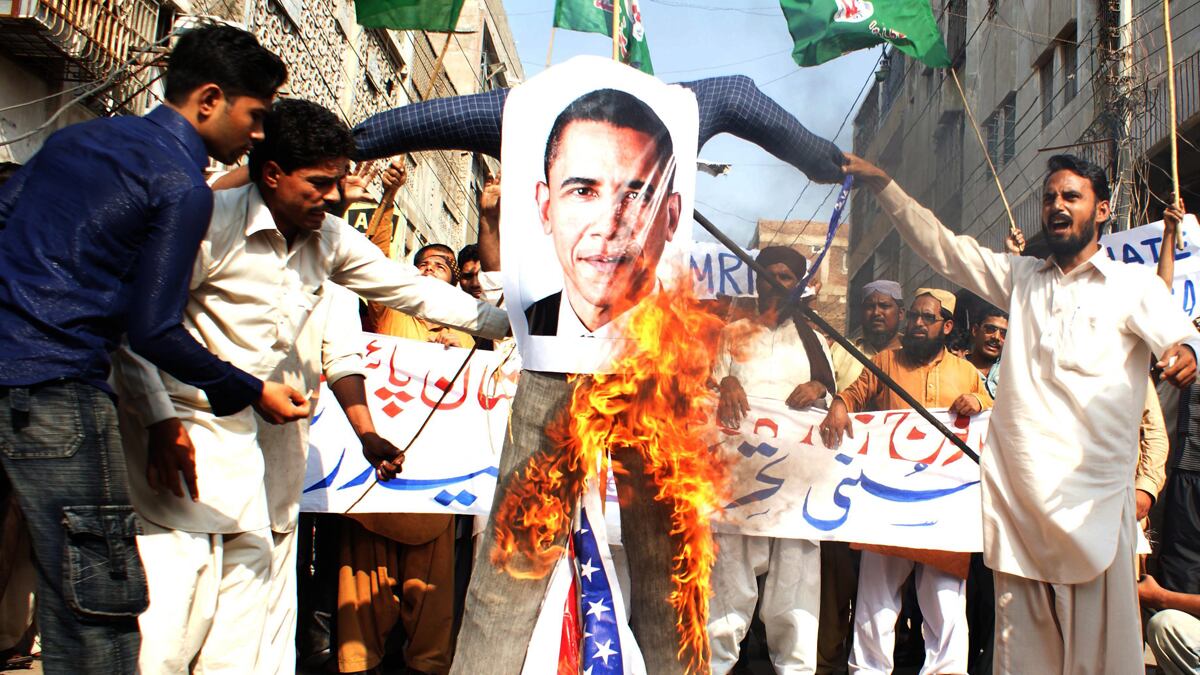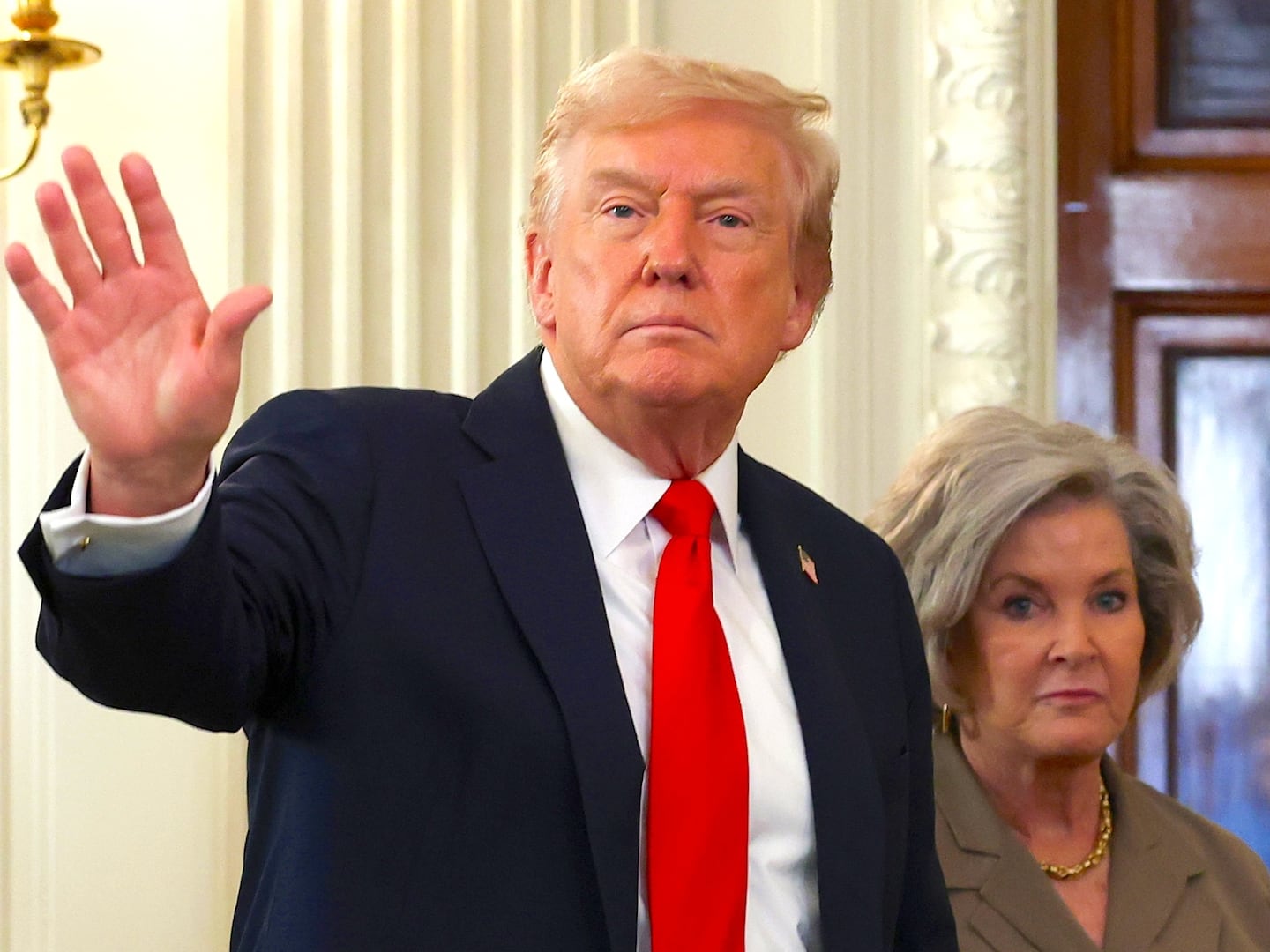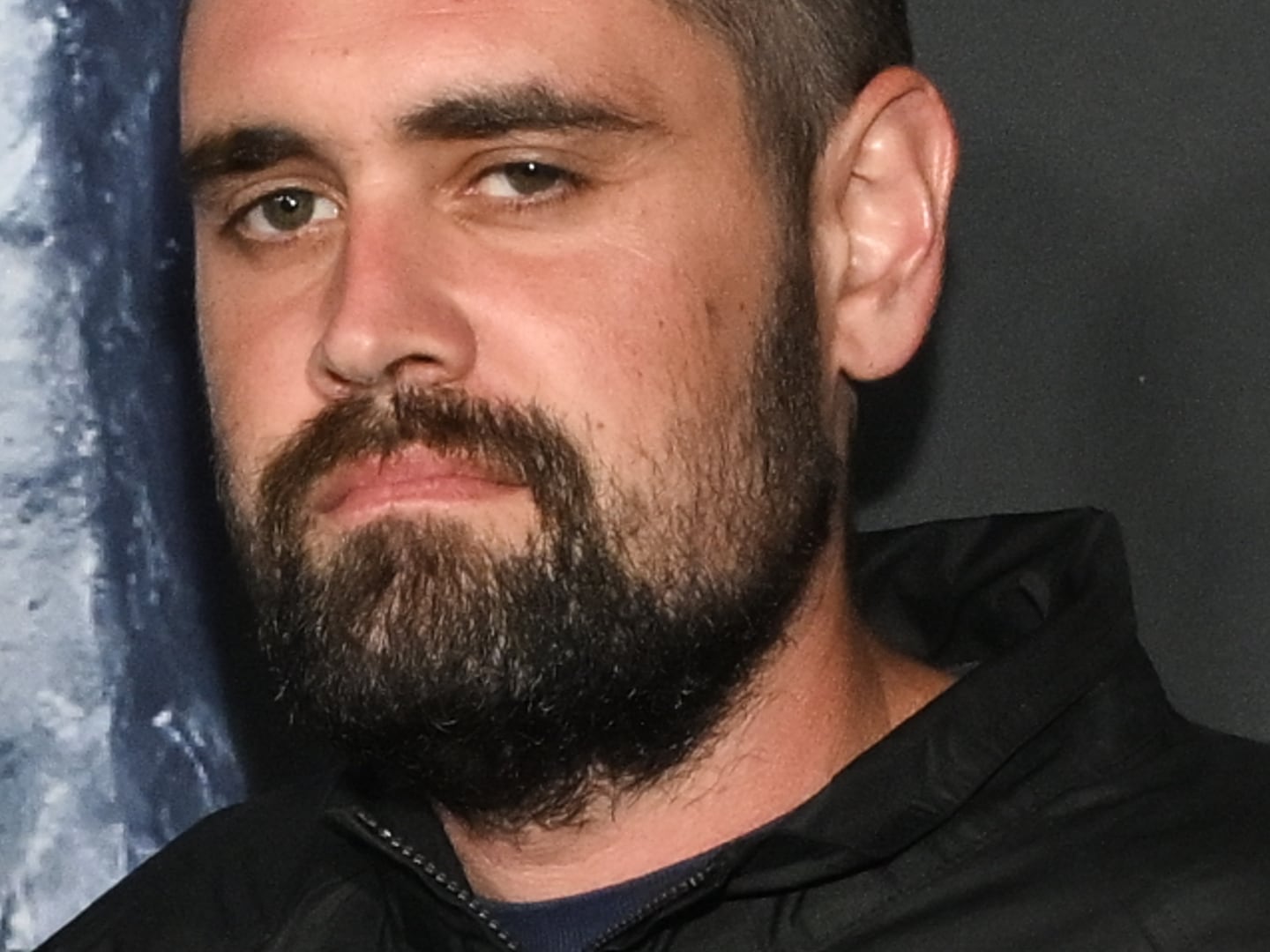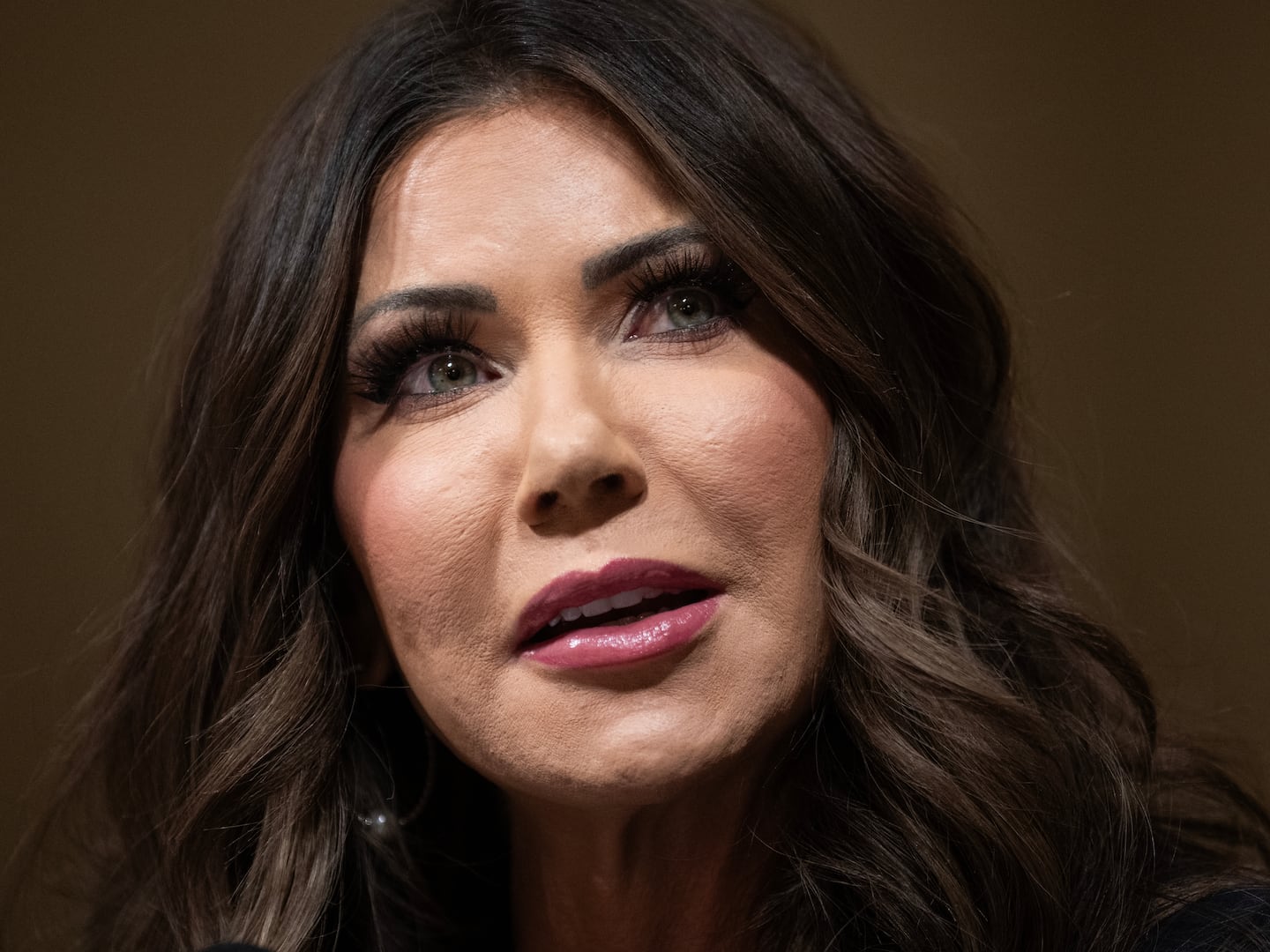President Obama is facing the toughest foreign-policy decision of his administration: will he send U.S. forces into Pakistan to strike back at the Haqqani network? The administration had already begun weighing that option after the Afghan insurgent group’s recent high-profile attacks—the Mumbai-style rampage at Kabul’s Inter-Continental Hotel in June, the massive truck bomb that injured nearly 80 U.S. soldiers at a NATO base in Wardak province on Sept. 10, and the Sept. 13 assault on the U.S. Embassy in Kabul. Now the Sept. 20 assassination of former president Burhanuddin Rabbani, the man in charge of Afghanistan’s efforts to negotiate with the Taliban, has given yet more urgency to the question at the National Security Council.
Those “spectaculars” (as U.S. military commanders refer to attacks like those in Kabul) have cast doubt on the strategy Obama adopted in fall 2009. The hope was that a U.S. troop surge would push the Afghan insurgents toward peace talks by the end of this year. But the Taliban have adapted, largely avoiding direct clashes with U.S. forces and instead launching a destabilization campaign of assassinations against Afghan government administrators and police. Meanwhile, the Haqqani family—allied to the Taliban, but distinct from them—have focused their efforts on a series of headline-grabbing spectaculars apparently designed to make the war seem unwinnable. U.S. forces in eastern Afghanistan have done their best to intercept the group’s operatives on their way to Kabul, but the task would be hopeless even with double the roughly 3,000 U.S. troops currently deployed there. Nor have the Haqqanis’ attacks been disrupted by drone strikes on their hideouts in North Waziristan.
But despite intense U.S. pressure, Pakistan has refused to act against the Haqqanis. In fact, senior administration officials are convinced that Pakistan’s Inter-Services Intelligence Directorate (ISI) is actively supporting the Haqqanis—a charge that Pakistan has vehemently denied. Adm. Mike Mullen, now on the verge of retirement as chairman of the Joint Chiefs of Staff, made a great effort during his tenure to build what he hoped was a relationship of frankness and trust with Pakistan’s Army chief of staff, Gen. Ashfaq Kayani. At a farewell meeting in Spain earlier this month, Mullen made a last-ditch effort to capitalize on that relationship, but colleagues say he emerged believing that Kayani had simply lied to him.
Mullen minced no words on the subject when he testified at last week’s hearing of the Senate Armed Services Committee. “The Haqqani network acts as a veritable arm of Pakistan’s Inter-Services Intelligence agency,” Mullen charged. “With ISI support, Haqqani operatives planned and conducted that truck-bomb attack, as well as the assault on our embassy. We have credible evidence that they were behind the June 28 attack against the Inter-Continental Hotel in Kabul and a host of other smaller but effective operations.” (Kayani responded by calling Mullen’s accusations “very unfortunate and not based on facts.”)

U.S. intelligence had already amassed ample evidence of links between the ISI and the Haqqanis, including detailed accounts of meetings with named ISI officers provided by prisoners and defectors. What shocks U.S. officials most about the latest attacks is that Pakistani intelligence operatives are implicated in assaults that are clearly aimed at killing Americans. Six cellphones were found on the bodies of the embassy attackers, and the memory chips in at least two had Pakistani numbers that the U.S. traced to ISI officers, and at least one of the Inter-Continental attackers made calls that were also tracked to ISI officers.
The administration still hasn’t given up trying to win Pakistan’s cooperation. Last week CIA chief David Petraeus, the retired general and former U.S. commander in Afghanistan, met with ISI chief Lt. Gen. Ahmed Shuja Pasha at CIA headquarters and laid out proof of the ISI’s ties to the Haqqanis, together with evidence that the family was behind those specific attacks. According to a knowledgeable source, Pasha conceded that the ISI had indeed supported Haqqani with supplies and training in the past. But the ISI cut all links a year or more ago, Pasha reportedly told Petraeus: Haqqani was now beyond Pakistan’s control.
Secretary of State Hillary Clinton even had a long meeting in New York with Pakistan’s new foreign minister, Hina Rabbani Khar. Although nobody in Washington believes that Khar has any clout in Islamabad, Clinton nevertheless spoke to her about the current crisis, and broached possible paths to a negotiated settlement in Afghanistan that would safeguard Pakistan’s interests.
Still, the administration is skeptical that Pakistan—or its Army and the ISI—is willing to support any peace talks that it does not control. Officials say they have evidence that Pakistani authorities have prevented members of the Taliban’s governing council, the Quetta Shura, from traveling outside Pakistan. Early last year, when Pakistan learned that the Taliban’s then–No. 2, Mullah Abdul Ghani Baradar, had been in secret talks in Kandahar with one of Afghan President Hamid Karzai’s brothers, the ISI promptly arrested him. Baradar has been held incommunicado ever since. Around the turn of the past year, another Taliban emissary, Tayyab Agha, managed to leave Pakistan for secret talks in Germany (and Qatar, too, by one account). Word of the German talks leaked this spring, and Agha has been in hiding ever since—because, according to a former U.S. official still involved in discussions of Afghan policy, he fears being killed by the ISI.
And now Rabbani has been assassinated. He was chairman of President Hamid Karzai’s High Peace Council, but talking to the Taliban wasn’t his most important task. He was the Tajik warlord whose Northern Alliance toppled the Taliban in 2001 with help from U.S. Special Forces—and as such, he was crucial to persuading the northern chieftains to accept the idea of cutting a deal with the hated Taliban. Precisely who was responsible for his murder has yet to be determined. What’s clear is that it was carefully designed to deprive Karzai of the widespread support he would need in order to sell a peace settlement.
For years the Americans have been approaching Pakistani officials with proposals for joint action, both political and military. Take Pakistan’s claims that India has been covertly increasing its presence in Afghanistan: U.S. officials offered to create a joint U.S.-Pakistan working group to investigate the suspicion—and promised that if Pakistan’s fears proved to be well founded, America would see to it that India’s operatives were expelled. Pakistan did not take up the offer.
Militarily, the Americans have pushed for cross-border cooperation against the Haqqanis. According to one senior officer, Washington has been prepared to discuss direct support—munitions, even helicopters—for Pakistan Army actions against the group. But the urging has gone nowhere, the officer says. Kayani always claims that Pakistan’s Army is too overstretched to mount an offensive against Haqqani’s sanctuaries in North Waziristan. Another source points out that Pakistan’s 14th Infantry Division actually has some 15,000 troops based outside North Waziristan’s capital, Miran Shah. Their base, he says, is less than a mile from the Haqqanis’ headquarters. He calls it “a repeat of Abbottabad”—the town where Osama bin Laden was found living just a mile from Pakistan’s West Point.
So what can President Obama do? Last week Defense Secretary Leon Panetta told the Senate Armed Services Committee: “I think the first order of business right now is, frankly, to put as much pressure on Pakistan as we can to deal with this issue from their side.” And if the Pakistanis don’t cooperate? “I don’t think it would be helpful to describe what those options would look like and what operational steps we may or may not take,” Panetta said. Pakistan’s initial reaction has not encouraged optimism. Interior Minister Rehman Malik responded to the U.S charges with furious denials: “If you say that it is ISI involved in that [embassy] attack, I categorically deny it,” he told Reuters. “We have no such policy of attack or aid attack through Pakistani forces or through any Pakistani assistance.” And he warned against unilateral action: “The Pakistan nation will not allow the boots on our ground,” he said. “Never.”
Kayani’s reply was even more intransigent. Pakistan has “a sovereign right to formulate policy in accordance with its national interests and the wishes of the Pakistani people,” he declared. (According to the Institute for the Study of War, a Washington-based outfit with a reputation for well-informed analysis of the war in Afghanistan, in early 2008, U.S. intelligence intercepted remarks by Kayani in which he described the family’s patriarch, Jalaluddin Haqqani, as “a strategic asset.”)
The administration still hopes the threat of U.S. action will persuade the ISI to rein in the Haqqanis. Failing that, the unilateral options are all bad. Any of them would certainly raise a storm in Pakistan. As sketched by a senior U.S. official, the challenge is to find an option whose impact would be decisive enough to be worth its unpleasant aftermath. Stepped-up drone strikes seem unlikely to meet that test. Heavier airstrikes by U.S. combat aircraft could flatten the Haqqanis’ headquarters and the villages they use as staging points, but only at the risk of heavy civilian casualties. Targeted Special Forces raids (most likely joint U.S.-Afghan operations) could be more promising, but they would require better real-time intelligence than the U.S. generally has, and there’s serious danger of an armed confrontation with the Pakistani troops garrisoned at Miran Shah. Worst of all would be the insertion of U.S. conventional forces in large numbers. “Nobody wants to relive the Brits’ experiences on the northwest frontier,” the official says, referring to British colonial forces’ long and futile struggle to tame the tribal areas in the late 19th and early 20th centuries.
Whatever America does, Pakistan can easily retaliate. Just for starters, it could shut down the truck convoys of U.S. military supplies from the Karachi docks through the passes into Afghanistan. It’s a tactic the Pakistanis have used before. In an effort to avoid a repetition of any such standoff, U.S. military planners have spent millions to build up a northern supply route from Central Asia into Afghanistan, but the alternative route still seems unable to handle the tonnage of fuel and other bulk supplies that coalition forces require. No one wants to talk about the other things Pakistan might do. The costs to both sides could be terrible. “We’re not going to allow these types of attacks to go on,” Panetta keeps saying. The hope is that Pakistan and the Haqqanis won’t put his promise to the test.






